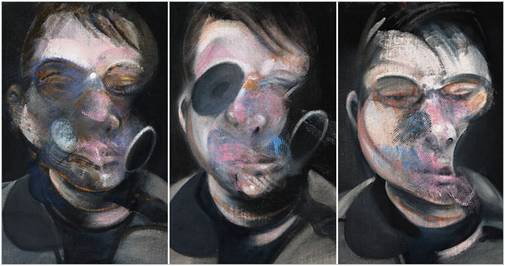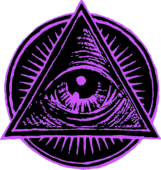In a margin note in Kaleidoscope Eyes (a more recent edition was retitled Turn On Your Mind: Four Decades of Great Psychedelic Rock, Jim DeRogatis listed a number of movies, books, artists, products, and all sorts of other things under the heading “The Psychedelic Influence in Popular Culture.” I thought it would be interesting to look at movies with a psychedelic influence, and the first installment in this series is the 1990 film Jacob’s Ladder directed by Adrian Lyne. Interestingly, this movie was not among those in DeRogatis’s list, but it is one of the trippiest movies I’ve ever seen. Spoiler alert: Before going any further, be aware that what follows contains spoilers.
Jacob’s Ladder contains particularly disturbing imagery which contributes to the sense of mystery about this film. Fortunately a couple of sources are available that explain the intent of the filmmakers. A companion book published at the time the film was released includes the screenplay (including deleted scenes) and an extended essay by the screenwriter, Bruce Joel Rubin, on how Jacob’s Ladder came to be made. Of course, now there is also a “Special Edition” DVD that contains many of these scenes and audio commentary by Adrian Lyne, but it was somewhat unusual in the pre-DVD era for any source to contain deleted scenes, and Rubin’s notes on why these scenes were deleted is illuminating.
Rubin compares screenwriting to a homeowner selling their house. Just as the new owners can do what they like with the house regardless of the original owner’s intent, filmmakers often take great license with a story once they have a screenplay in hand. It sounds as if this was not a problem the case of Jacob’s Ladder, however, as Rubin and Lyne collaborated effectively, with Lyne’s visual approach to the film adding great power to the themes Rubin had developed in the screenplay. The main character in the film, Jacob Singer (Tim Robbins), is plagued by demons as he faces the end of his life, and Rubin wanted to depict his struggle with traditional imagery. Lyne, however, felt that it would be too easy for the audience to dismiss familiar images of demons, or even laugh at them. Lyne wanted to shock the audience by using images of deformity, what they came to refer to as “thalydomide,” and looked to 20th century artists for the visual style. Despite their initial disagreement, Rubin came to trust Lyne’s ideas. They considered H.R. Giger, a strong influence for Ridley Scott’s Blade Runner, and photographer Joel Peter Witkin, but perhaps the strongest visual influence came from the paintings of Francis Bacon, particularly in the way he would distort the heads of his subjects.

One of the most lasting images from the film is what Lyne and Rubin came to refer to as “Vibroman,” an image used at various points during the film of a figure where the body is in focus but the head is blurred through rapid motion. At first Rubin was resistant to this image, but he came to see it as “a vision of the unknowable, the unthinkable, the ungraspable. He was the vision of death.” A strong influence on Lyne’s development of this image came from Street of Crocodiles, a 1986 short film by stop-motion animators Timothy and Stephen Quay.
What is revealed to the viewer at the end of Jacob’s Ladder that the entire story following the opening scene of Vietnam War combat has been taking place in Jacob’s mind as he lies on the operating table in a field hospital fighting for his life. He imagines his life extending a few years into the future, working at the post office, divorced from his wife and living with Jezebel (Elizabeth Pena), and struggling with death of his youngest son (McCauley Culkin in an uncredited role). Jacob comes to understand that he is dying and ultimately accepts it. Rubin explains that his original idea was that Jacob was already dead, but later realized that the story would have much more spiritual significance if he were in the process of dying. Rubin drew on a Buddhist notion of death, particularly the Tibetan Book of the Dead, as Jacob struggles with letting go of his physical existence. According to Rubin,
In Eastern religions, it is not the body that dies, but the illusion of the body. One loses the sense of separation between one’s finite self and the larger universe. In Eastern terms, this separation is illusory and death is a disillusioning experience. It is a moment of truth. You become aware of your oneness with all existence, a oneness that has always been there. If you are not prepared to be stripped of your illusions, death will be a painful process. If you have spent a lifetime angrily fighting with the world around you, you may not enjoy discovering that you have, in fact, been doing battle with yourself. You will fight this knowledge. You will see terrifying visions. Hell will become a real place. If, however, you have loved life, if you have learned to remain open to it, then death is a liberation, a moment in which you recognize that there is no end to life. You are one with it in all its finite and infinite manifestations. (pp. 190-191)
Rubin also drew on the biblical imagery of Jacob’s ladder. Once again, however, Rubin initially saw this in traditional terms, but Lyne’s visual sense prevailed, as Jacob, acccompanied by his lost son Gabe, ascends a staircase in his former home as he accepts his death. It’s interesting to note that the film shows Jacob consulting traditional images of demons as he tries to make sense of his terrifying visions. He is shown examining Gustave Doré’s illustrations to Dante’s Divine Comedy.
A film that strongly influenced both Rubin and Lyne was An Occurrence at Owl Creek Bridge (1962) by French director Robert Enrico, from a short story by Ambrose Bierce written in 1890. An Occurrence at Owl Creek Bridge won the Best Short Subject award at the Cannes Film Festival in 1962 and the Academy Award for Live Action Short Film in 1963. The Twilight Zone showed this film as the final episode of the 1964 season.
An Occurrence at Owl Creek Bridge is set in the Civil War, and a man is to be hanged for sabotage. A noose is placed around his neck and he is dropped from the the bridge, but he escapes when the rope breaks. He runs away to wife, but just as he is reunited with her, the scene cuts to the bridge where the rope tightens on the man’s neck. The entire film had been in the condemned man’s mind. He had imagined his escape and reunion with his wife during the last seconds of his life. Jacob’s Ladder takes this premise, updates the film to the Vietnam War and expands on the idea, but where the central character in An Occurrence at Owl Creek Bridge alternates between appreciating the beauty around him and the terror of making his escape, Jacob is plagued by demons as he clings to life.
Jacob’s Ladder attempts to explain its hallucinogenic qualities by making reference to experiments conducted on Vietnam-era soldiers using the drug BZ. Ironically enough, however, this is the least satisfying aspect of the movie, as the statement at the end of the film feels tacked on as an afterthought. The movie hints at some sort of government conspiracy, and it has since been revealed that the CIA’s Cold War experiments with hallucinogenic drugs did extend into the Vietnam era, but this serves as a distraction from Jacob’s spiritual struggle. Also, BZ’s effects are not at all what are depicted in Jacob’s Ladder, not to mention that since all of this is happening in Jacob’s head, he would have no way of receiving the information the chemist gives him in his exposition late in the film. Still, this contributes to the idea that Jacob is experiencing a hallucinogenic nightmare.

The quote you gave which began “In Eastern religions, it is not the body that dies, but the illusion of the body.” was this from the Tibetan Book of the Dead or another source? I’m really interested in reading up on this and can’t for the life of me find where it came from. Thank you.
That quote comes from the screenwriter Bruce Joel Rubin in the book of the film Jacob’s Ladder You can find it on Amazon